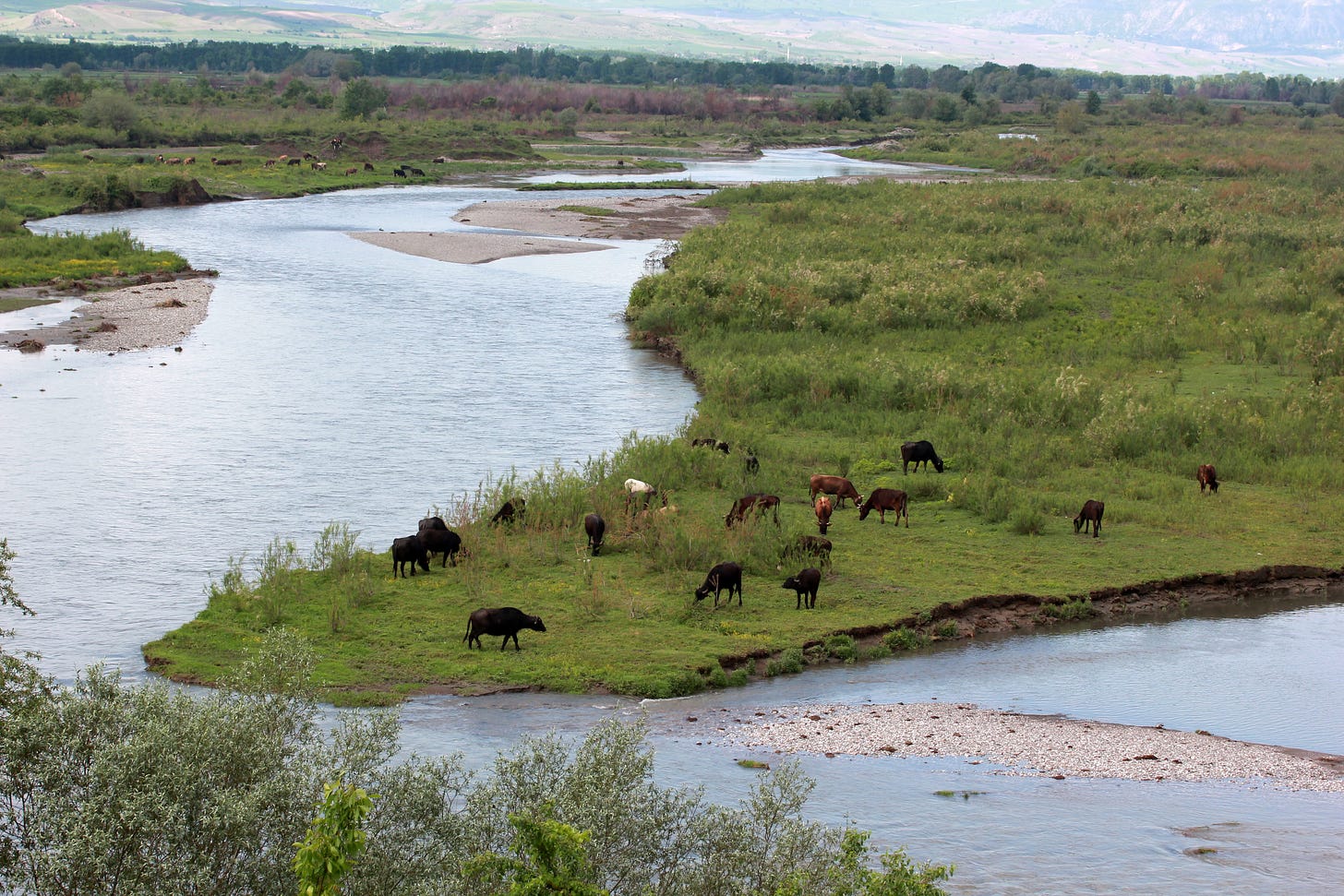If the Goal Is Climate, Why Not Regeneration?
When governments talk about “fixing” agriculture’s climate impact, their solutions almost always start in a laboratory.
When governments talk about “fixing” agriculture’s climate impact, their solutions almost always start in a laboratory. Synthetic additives, engineered enzymes, precision microbes—all designed to suppress nature’s own chemistry in the name of progress. But the truth is simpler, older, and already proven: nature has been regulating methane and carbon for millions of years without a patent.
In Denmark, the Bovaer® mandate has turned dairy farmers into subjects in a chemical experiment. The idea is to reduce methane by altering how a cow digests her feed. Yet the irony is that ruminants are not the climate problem—they are part of the solution when managed in harmony with soil and grass. The real problem is the industrial model of farming that broke the natural cycle in the first place.
The Natural Methane Cycle
Every blade of grass a cow eats pulls carbon from the air. When the cow belches methane, that carbon returns to the atmosphere for a short stay—about a decade—before being broken down into CO₂ and water and reabsorbed by plants. It’s a closed loop. What destabilized that loop wasn’t livestock; it was tillage, synthetic fertilizer, and fossil-fuel energy.
Healthy pastures act as carbon sponges. Each hoofstep pushes organic matter into the soil; each manure pat feeds microbes that capture and store nutrients. Methane released above ground is partially reabsorbed below ground by methanotrophic bacteria living near the root zone. It’s the planet’s original recycling program.
Instead of trusting this natural system, modern climate policy tries to chemically silence it—adding cost, risk, and complexity without solving the core issue: soil degradation.
Regeneration Is the Real Climate Technology
Around the world, farmers and ranchers are already cutting emissions and rebuilding carbon stocks without chemical shortcuts. Their tools are sunlight, roots, and time.
1. Adaptive Multi-Paddock Grazing
Rotating animals across small paddocks allows grass to rest and regrow, increasing photosynthesis and soil carbon. Studies from Texas A&M and Australia show net-negative carbon footprints when herds are managed regeneratively.
2. Cover Crops and Perennial Forages
Instead of bare soil or corn silage monocultures, diverse perennial pastures keep the ground covered year-round, capturing carbon and nitrogen naturally. Deep roots store carbon far below the surface, where it remains for centuries.
3. Biochar and Compost Integration
Farmers blending composted manure or biochar into soils enhance microbial life, reducing nitrous-oxide emissions—a greenhouse gas far more potent than methane—and improving fertility without chemical inputs.
4. Methane-Oxidizing Microbes
Research from New Zealand and the U.S. shows soils under regenerative grazing host communities of methane-eating bacteria that offset livestock emissions at the ground level. No additives required—just biology doing what it was designed to do.
5. Integrating Livestock with Crops
Bringing animals back to cropland closes nutrient loops, reduces synthetic fertilizer needs, and cuts transportation emissions. The waste from one becomes the energy for another.
Economics That Work for Farmers, Not Corporations
Regeneration doesn’t require royalties, licensing, or government procurement. It restores farmer autonomy instead of surrendering it. When a producer builds soil organic matter by even one percent, that acre can store up to 20 tons of carbon and retain 25,000 gallons of water. Those are tangible climate outcomes—achieved without additives, labs, or patents.
Compare that with the chemical model: recurring purchases, liability risk, and dependency on outside corporations. Regenerative systems flip the power structure, rewarding stewardship instead of compliance.
Why Bureaucracies Ignore the Obvious
If the regenerative model is so effective, why isn’t it the global standard? Because there’s no corporate monopoly on grass. A patent can’t be filed on sunlight or soil microbes. Regulatory agencies measure emissions, not soil health. Climate treaties reward reductions on paper, not living systems underground. And so, governments chase statistical carbon savings while the biological carbon sink—the ground beneath their feet—continues to erode.
A Call for Genuine Climate Stewardship
If the goal is truly climate stability, then the path forward is biological restoration, not biochemical suppression. Denmark could become a world leader not by dosing cows, but by proving that regenerative dairying—managed grazing, perennial pastures, and microbial soil life—can draw down more carbon than any additive ever will.
Farmers understand this better than anyone. They don’t need a lecture about emissions; they need permission to farm the way nature intended. The soil is ready to help. It always has been.
Is Humanity Going To Far?
The fight over Bovaer® isn’t just about one additive. It’s about whether humanity believes its own technologies can outperform the design of creation itself. Nature doesn’t need to be engineered—it needs to be respected. And perhaps that’s the hardest solution for a profit-driven world to swallow.




